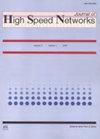数据转发:一种新的基于VoteRank和选型性的方法来改善社交网络中的传播时间
IF 1
Q4 COMPUTER SCIENCE, INFORMATION SYSTEMS
引用次数: 0
摘要
随着社交网络的快速发展,研究和分析其结构和行为已成为企业最重要的需求之一。社交网络分析可以用于许多不同的目的,如产品广告,市场定位检测,有影响力的成员检测,预测用户行为,推荐系统的改进等。基于应用增强信息在不同方面的传播性能是社会网络分析的最新研究课题之一。本文提出了一种改进社交网络上分发时间和分发精度等指标的新方法。该方法利用节点的局部属性和网络的结构信息在网络中进行数据转发,减少了传播时间。首先,分别计算所有节点的中心性和选型性,以选择两个标准中值最高的两组节点。然后,通过计算两个集合的交集来选择网络的初始活动节点。接下来,根据初始活动节点检测分布路径,计算传播时间。性能分析结果表明,该方法在分布时间、精度、召回率和AUPR标准等方面均优于现有方法。本文章由计算机程序翻译,如有差异,请以英文原文为准。
Data forwarding: A new VoteRank and Assortativity based approach to improve propagation time in social networks
With the rapid development of social networks, studying and analyzing their structures and behaviors has become one of the most important requirements of businesses. Social network analysis can be used for many different purposes such as product ads, market orientation detection, influential members detection, predicting user behaviors, recommender systems improvements, etc. One of the newest research topics in social network analysis is the enhancement of the information propagation performance in different aspects based on application. In this paper, a new method is proposed to improve few metrics such as distribution time and precision on social networks. In this method, the local attributes of nodes and also the structural information of the network is used to forward data across the network and reduce the propagation time. First of all, the centrality and Assortativity are calculated for all nodes separately to select two sets of nodes with the highest values for both criteria. Then, the initial active nodes of the network are selected by calculating the intersection of the two sets. Next, the distribution paths are detected based on the initial active nodes to calculate the propagation time. The performance analysis results show that the proposed method has better outcomes in comparison to other state-of-the-art methods in terms of distribution time, precision, recall, and AUPR criteria.
求助全文
通过发布文献求助,成功后即可免费获取论文全文。
去求助
来源期刊

Journal of High Speed Networks
Computer Science-Computer Networks and Communications
CiteScore
1.80
自引率
11.10%
发文量
26
期刊介绍:
The Journal of High Speed Networks is an international archival journal, active since 1992, providing a publication vehicle for covering a large number of topics of interest in the high performance networking and communication area. Its audience includes researchers, managers as well as network designers and operators. The main goal will be to provide timely dissemination of information and scientific knowledge.
The journal will publish contributed papers on novel research, survey and position papers on topics of current interest, technical notes, and short communications to report progress on long-term projects. Submissions to the Journal will be refereed consistently with the review process of leading technical journals, based on originality, significance, quality, and clarity.
The journal will publish papers on a number of topics ranging from design to practical experiences with operational high performance/speed networks.
 求助内容:
求助内容: 应助结果提醒方式:
应助结果提醒方式:


